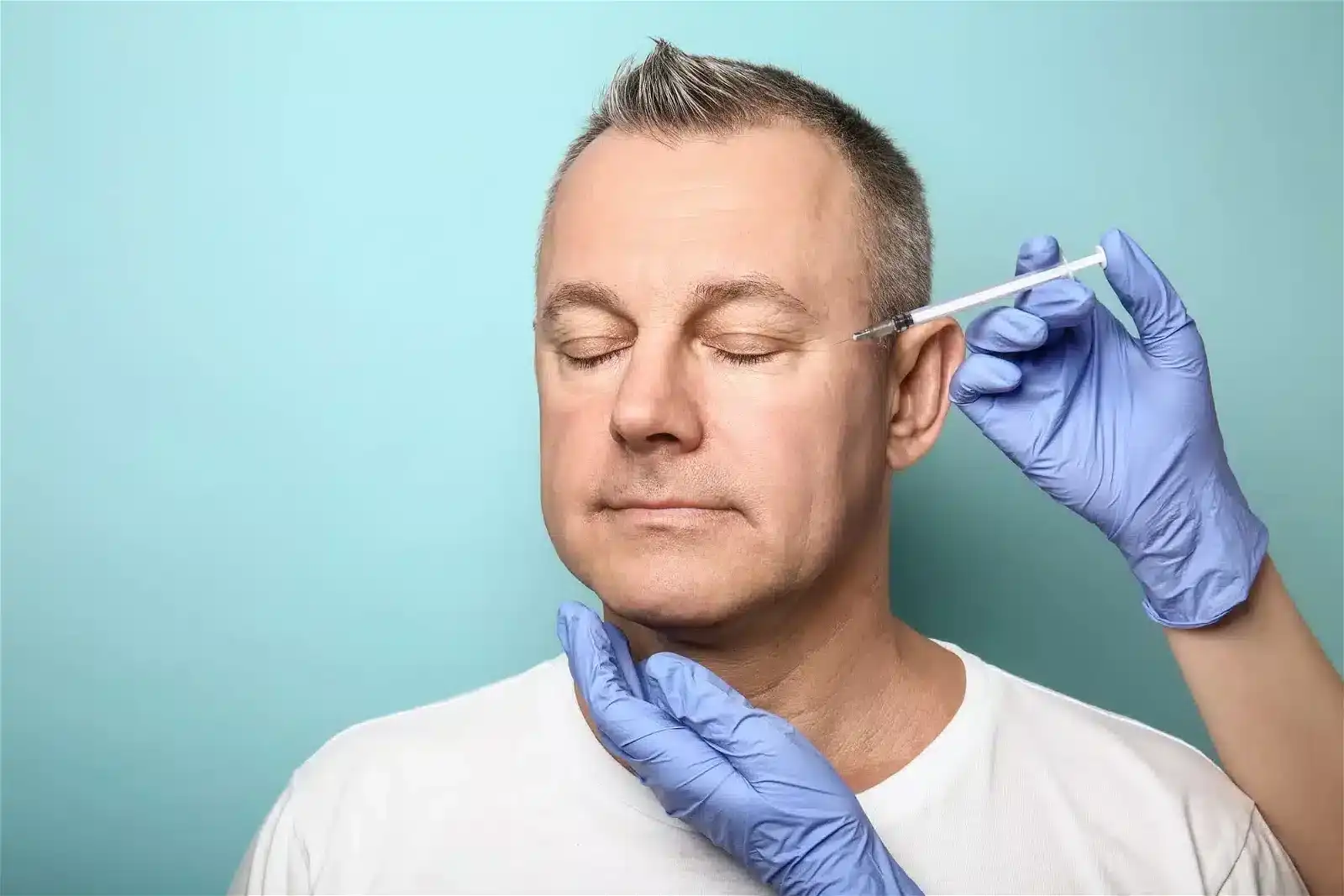
Liporase’s Role in Aesthetic Medicine
David Fuller
Last Updated On: October 15, 2024
Even in the hands of skilled practitioners, occasional missteps or unexpected outcomes can occur. Thankfully, the realm of aesthetic medicine has the solution.
Mistakes can happen, but with Liporase, they can also be reversed. Today, we’ll explain how to use Liporase, what it is, and what it brings to the table in the ever-advancing field of aesthetic medicine.
What Is Liporase?
Liporase is the brand name for a hyaluronidase enzyme produced by Daehan New Pharm, a South Korean company. Its main use is for dissolving hyaluronic acid fillers, but it can also boost the effects of fat-dissolving injections.
When dissolving HA fillers, Liporase targets only synthetic hyaluronic acid, leaving our own supplies intact. It works by cleaving glycosidic bonds within acids and efficiently turning them into monosaccharides. Once the bonds are broken, the patient’s body will absorb the filler and dispose of it. The whole process is relatively quick, and you can expect to see the filler breaking down around 24 to 48 hours after Liporase usage, but the exact time required will depend on the filler’s location and the brand.
When it comes to the fat dissolving, Liporase prepares the area by weakening the membrane of the surrounding tissue, which speeds up the absorption of the following drug. Before being used primarily as a substitute for breaking down dermal fillers, the hyaluronidase enzyme was used to increase the absorption of anesthesia and other drugs due to its ability to increase absorption in the area.
How To Use Liporase
When you order Liporase from Med Supply Solutions, you will receive 10 vials of powder, which need preparation before use. The recommended dose is to use 1 vial of Liporase with 3cc of saline to dissolve 3cc of hyaluronic acid filler.
For preparation of the vial, start by opening the container, adding 1 mL of 0.9% NaCl saline solution. Mix the solution slowly, don’t shake it, until the powder has dissolved, then add 2 mLs of the same saline solution and mix again. Once the solution is properly mixed, then you are ready to apply it on the desired area.
To effectively dissolve dermal filler with Liporase, you want the now-prepared formula to interact with binding sites within the hyaluronic acid. The fastest way to do this is by injecting the Liporase directly into the dermal filler, but if the filler is within a blood vessel, it’s more than enough to inject it in its close proximity.
Once the Liporase has done its work, the patient has to wait at least 10 days before injecting dermal fillers in the same area.
If you plan to use it to boost fat-dissolving injections like Kybella, the steps are similar, but once you mix the powder with 1 mL of saline solution, instead of 2 mLs, you’ll add 4 mLs of saline. Once the formula is prepared, apply it to the area where the fat-dissolving injections will be used, followed by the fat-dissolving injection. Do not mix them in one syringe.
When To Use Liporase
Dissolving fillers with Liporase is easy and safe, but when should you consider using it? While some reasons have already been mentioned throughout the article, here’s a concise and comprehensive list of specific purposes for which Liporase can be used:
- Uneven filler distribution: In some cases, dermal fillers may not distribute evenly, causing asymmetry or lumps. Liporase can help correct these irregularities.
- Unwanted filler appearance: If the results of a filler treatment turn out different than expected or if the patient simply desires a different look but doesn’t want to wait for the filler to dissolve on its own, Liporase can be used to speed up the process.
- Filler migration: Fillers may sometimes migrate to unintended areas. Liporase can help address these instances by dissolving the migrated filler.
- Allergic reactions: In rare cases, patients may experience allergic reactions to filler substances. Liporase can assist in safely and effectively removing the allergen.
- Excessive volume: When fillers result in an unnatural or excessively voluminous appearance, Liporase can be employed to reduce volume and achieve a more balanced result.
- Boosting fat-dissolving injection absorption: Liporase can enhance the absorption of fat-dissolving injections, optimizing their effectiveness and ensuring a more efficient reduction of localized fat deposits.
Is Liporase Safe?
The biggest problem with the Liporase hyaluronidase injection (and any other hyaluronidase-based one) is that hyaluronidase can cause an immediate hypersensitivity reaction. Delayed hypersensitivity reactions can also happen but are rarer. Therefore, it’s important to conduct a skin test before proceeding with Liporase application. It should be noted that allergic reactions can’t be treated with antibiotics.
Liporase is approved by the Korean Ministry of Food and Drug Safety (MFDS), formerly known as the Korea Food & Drug Administration (KFDA). It doesn’t have FDA approval or a CA mark, but its substances are safe and commonly used in other products. Liporase ingredients are hyaluronidase and lactose hydrate.
Conclusion
Using Liporase presents a safe and efficient method for removing unwanted dermal fillers from the patient’s body. With its ability to selectively target synthetic hyaluronic acid, Liporase provides a reliable means to correct uneven filler distribution, address an unwanted appearance, manage filler migration, mitigate allergic reactions, and restore natural proportions by reducing excessive volume. Furthermore, its role in boosting the absorption of fat-dissolving injections ensures optimized outcomes in body contouring. By harnessing Liporase’s capabilities, medical professionals can ensure a smoother and safer treatment of their patients.
FAQ
How long does it take for Liporase to work?
Liporase starts working after 24 to 48 hours.
How does Liporase work?
Liprose works by breaking the bonding molecules that hold dermal fillers together.
How do you mix Liporase and Lipo Lab?
You don’t mix them together; instead, you prepare and administer Liporase first to the desired area and then administer Lipo Lab or any other fat-reducing injection.
References:
- Jung H. Hyaluronidase: An overview of its properties, applications, and side effects. Arch Plast Surg. 2020 Jul;47(4):297-300. doi: 10.5999/aps.2020.00752. Epub 2020 Jul 15. PMID: 32718106; PMCID: PMC7398804.
- Rzany B, Becker-Wegerich P, Bachmann F, Erdmann R, Wollina U. Hyaluronidase in the correction of hyaluronic acid-based fillers: a review and a recommendation for use. J Cosmet Dermatol. 2009 Dec;8(4):317-23. doi: 10.1111/j.1473-2165.2009.00462.x. PMID: 19958438.
- Farr C, Menzel J, Seeberger J, Schweigle B. Klinische Pharmakologie und Anwendungsmöglichkeiten von Hyaluronidase unter Berück-sichtigung von Hylase “Dessau” [Clinical pharmacology and possible applications of hyaluronidase with reference to Hylase “Dessau”]. Wien Med Wochenschr. 1997;147(15):347-55. German. PMID: 9432805.
Products
Cart
Log In
Newsletter
Subscribe for exclusive offers and updates on new arrivals
Share feedback at:
Working Hours
MON - SUN 9AM to 6PM EST
The Most Popular Brands
Med Supply Solutions
Support
Secure checkout is guaranteed with full adherence to PCI DSS payment standards.
Products listed here are guaranteed authentic and manufacturer-sourced.
Pay easily with trusted providers


Copyright 2025. Med Supply Solutions